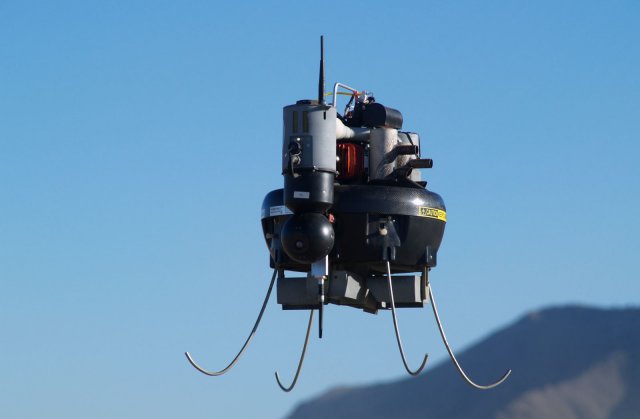 A year and a half ago, Miami-Dade Police Department received two Honeywell T-Hawks as part of a Department of Justice grant. It was the first large metro force in the nation to get these metallic eyes in the sky, and hoped to use them as support during hostage situations and police standoffs.
A year and a half ago, Miami-Dade Police Department received two Honeywell T-Hawks as part of a Department of Justice grant. It was the first large metro force in the nation to get these metallic eyes in the sky, and hoped to use them as support during hostage situations and police standoffs.
So far, at least, the department has yet to use one in action. It doesn’t help that, per the Federal Aviation Administration, MDPD is allowed to fly the aircraft only below 300 feet, outside city limits, within visual sight of the operator, and during the day. (The devices can fly up to 9,000 feet and hover in midair.)
But MDPD isn’t going to throw in the towel on its robot helpers. Last month, through the county commission, the department put in for a renewal of its FAA license to fly the aircraft. That measure, sponsored by Commissioner Jose “Pepe” Diaz, is expected to pass a vote this week.
So why keep the programme going despite the heavy restrictions and lack of use (especially when privacy advocates cringe at the words drone and police in the same sentence)? Major Thomas Hanlon of MDPD’s Special Patrol Bureau says practice will hopefully make perfect.
“Our ultimate goal is obviously to expand the realm with the FAA, building up the credibility of how we use [the UAS],” Hanlon tells Riptide. “We’re showing them that we operate this responsibly.”
Does expanding that realm include using the UAS for surveillance? Hanlon says MDPD has no plans to spy on you from afar.
What’s best about the programme for MDPD, though, is that it doesn’t cost the department much to have the aircraft. One of the $50,000 machines was paid with the DOJ grant, while the other is leased from its developer, Honeywell, for $1 a year.
Source: Miami New Times
